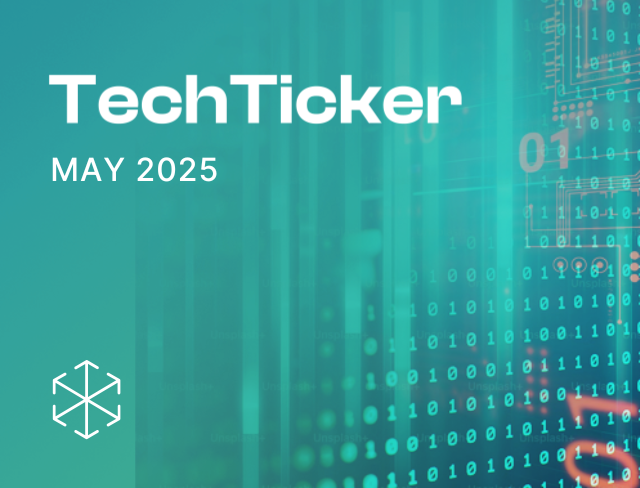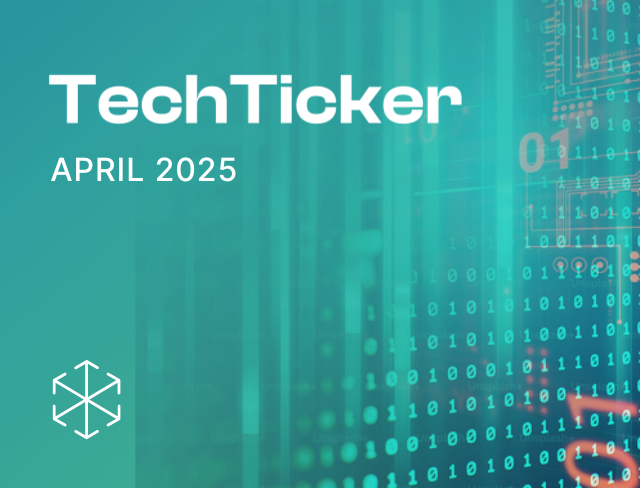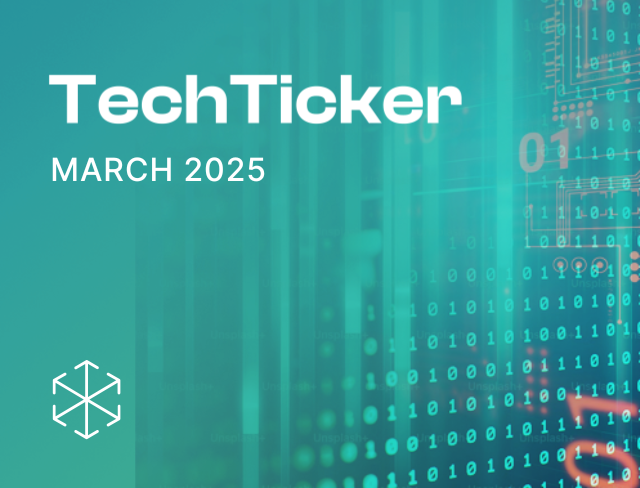The past month has been abuzz with a flurry of activity, far surpassing the imaginings of our most active readers. The budget’s presentation and debates in Parliament have kept excitement in the policy space palpable. With the close of this parliamentary session, we bring you up to speed on parliament happenings, the latest broadcasting bill on the block, round-the-corner data protection rules, and the apex court battle on misleading advertisements. Without any further ado, presenting to you this month’s tech-ticker!
Source: quickmeme
Kicking off with the Economic Survey 2023-24 and the Union Budget 2024-25, the year’s monsoon session was quite eventful. The Union Finance Minister, Nirmala Sitharaman, set parliamentary records by presenting the first budget of the NDA 3.0 government, and her seventh (if we include the interim budget). We wrote about the interim budget in an older edition of the ticker, and analyzed the 2024 general election results here.
The Economic Survey — which is the country’s economic report card — predicted a positive GDP growth rate of 6.5 to 7 percent. The survey highlights how advances in Digital Public Infrastructure (such as UPI) and the rapid expansion of access to internet have driven financial inclusion. The survey also expressed that AI casts a shadow of uncertainty on employment, across skill levels. Illustratively, this includes automation of routine tasks like customer service and decline in business process outsourcing sector jobs. Coupled with the skill gap identified in the survey, this should ring a note of caution for India’s youth.
Budget Tales: Our team had mixed reactions overall for the budget. It was neither brilliant, nor outright dangerous. Industry representatives praised the budget’s focus on MSMEs, skill development and employment generation, especially since this directly ties-in with the concern areas identified in the survey. Leading economists cautioned that the absence of any significant policy announcements was a departure from usual practice.
What should you know about the budget?: The coalition dynamics of the newly formed government is reflected with the special financial packages and increased infrastructure-related investments for the states of Andhra Pradesh and Bihar. The budget allocates INR 2 lakh crore for 5 schemes—with the aim of supporting employment, skilling, and other opportunities—for over 4 crore youth. These schemes incentivize hiring first time employees, support new workers by a direct benefit transfer and propose a monthly allowance for interns.
Anything tech-related?: Glad you asked. Apart from the abolition of angel tax (which brought relief to entrepreneurs and investors), there were no major policy announcements on tech. Throughout her speech, the Finance Minister spoke about the potential of technology to boost productivity and bridge economic disparities. Importantly, the budget highlights the success of the India Stack in the payments sector and emphasizes developing DPIs across multiple service sectors, such as e-commerce, law, health, logistics, and others.
On the budgetary allocations front, the Ministry of Electronics and Information Technology (MeitY) saw a whopping jump of 52 percent — a notable shift to INR 21,936 crore, from the INR 14,421 allocated last year. This significant boost is aimed at advancing emerging technologies such as AI and quantum computing. This allocation also aligns with the IndiaAI Mission (for which INR 551 crores have been set out separately) to establish a 10,000 GPU infrastructure for fostering AI research and development.
If you want to know more of the tech-focused takeaways from this year's budget, check out our post on LinkedIn.
What else happened in the Parliament: The Monsoon session had everything from the get-go. We saw protests, walkouts, sloganeering, debates, and an Opposition that appeared to be united and assertive. Given that this was a budget session, a lot of time in Parliament was spent debating the budget and related proposals.
Technology-specific issues came up mainly as responses to MPs’ concerns, which were raised through questions, special mentions or private member bills. This included private member bills to: set up a National AI regulatory authority (NAIRA) to regulate and monitor use of AI, prevent and criminalize deepfakes, protect employees’ rights from use and implementation of AI and prevent online hate speech. Of course, private member bills rarely become law (the last one was in 1970!).Still, this reflects a growing trend of MPs becoming more vocal and active in sharing opinions on substantive tech issues. In fact, there were discussions to re-vamp the over two-decade old information technology statute and create a commission to regulate and promote IT industry development, as well.
A noteworthy reply that caught our eye was Union Minister, MeitY, Ashwini Vaishnaw’s strongly worded defense of the Fact Checking Unit (FCU) established under the IT Rules, 2021. He said that the government is best placed to decide if a fact concerning a ministry, or the government in general, is correct or not. As a reminder, the IT Rules and the FCU’s constitutional validity is under challenge in the Bombay High Court. On January 31, a Division Bench consisting of Justice Gautam Patel and Justice Neela Gokhale delivered a split verdict with Justice Patel striking down the IT Rules, 2021 in their entirety, and Justice Gokhale upholding the validity. Justice Atul Chandurkar, the tie-breaker judge in the matter has reserved his ruling, for now. In the meantime, the government notified the FCU, although this notification was later stayed by India’s Supreme Court.
Mini-splainers
Journey towards DPDP Rules
Source: Memes.getyarn
A year after the enactment of the Digital Personal Data Protection Act (DPDP Act), the Rules under this law continue to be awaited. Reports suggested that the Rules would be released by the end of the Budget session. With the IT Ministry reportedly allowing industry players to explore their own methods to verify parental consent before a child accesses an online service, there seem to be no active roadblocks stopping the Rules now.
Without the Rules, there has been a lack of clarity among industry on the operationalization of the DPDP Act. Notably, the 44 provisions-long DPDP Act makes 17 references to ‘rules made thereunder’ and 21 references to ‘prescribed by rules’. A 45-day consultation period may follow the release of the rules.
While the Rules are awaited, there have been other developments, including discussions on the constitution of the 5-member selection committee which will make appointments to the Data Protection Board (DPBI). Around INR 2 crore was allocated to this body in the Union Budget.
The Hushed Broadcasting Bill
In its second innings, the broadcasting bill has been shrouded with secrecy. After some clamour, the second draft of the Broadcasting Bill appears to have been withdrawn by the MIB.
Reports suggested that consultations were conducted with chosen invitees by the MIB. Even though watermarked copies with unique serial numbers were circulated among limited stakeholders for comments, the copy was leaked. While the cause of all this secrecy is not entirely understood, stakeholders have been quick to react to this hushed process and the contents of the bill.
There is raging criticism on potential inclusion of social media platforms, over-the-top services, and digital news broadcasters—as the proposed law could potentially cover all online creators, including influencers. Prominent politicians such as Indian National Congress (INC) spokesperson Pawan Khera, INC leader Priyanka Gandhi and Trinamool Congress MP Jawhar Sircar have also used this opportunity to call out the government’s overarching approach to regulating content. The pressure from different stakeholders seems to have worked. The government has withdrawn the bill (asking for the watermarked copies to be returned), and has offered additional time till October 15, 2024, for comments on the November 2023 draft.
You can see our comments on the 1st draft on our blog here.
SDCs’ to and fro
The Supreme Court’s order in the Patanjali case, regarding the company's misleading claims of curing COVID, triggered intense scrutiny on advertising. Following the court’s directions, an MIB advisory mandated advertisers to fill details of every advertisement they released. Recognizing implementation issues with this self-declaration mechanism (such as crashing of portal, additional compliance burden, increased cost implications), impact on volume of ads, and confidentiality concerns, the ministry intervened. It limited the scope of application of the mandate to an annual basis, for ads relating to two sectors—food and health. Notably, to address persisting issues (such as ambit of ‘food’ and ‘health’ sectors or proposal of a single-click approach for SDCs), the court has directed further dialogue between MIB and industry. In the meantime, the apex court closed its contempt proceedings against Patanjali, warning them to meaningfully comply with the court’s orders. To recall, contempt proceedings were initiated since Baba Ramdev and Balkrishna continued making claims, after they had assured the court they would not make any ‘casual statements’ on medicinal efficacy.
That’s all from us, for now. Stay tuned for the next version of the ticker.










